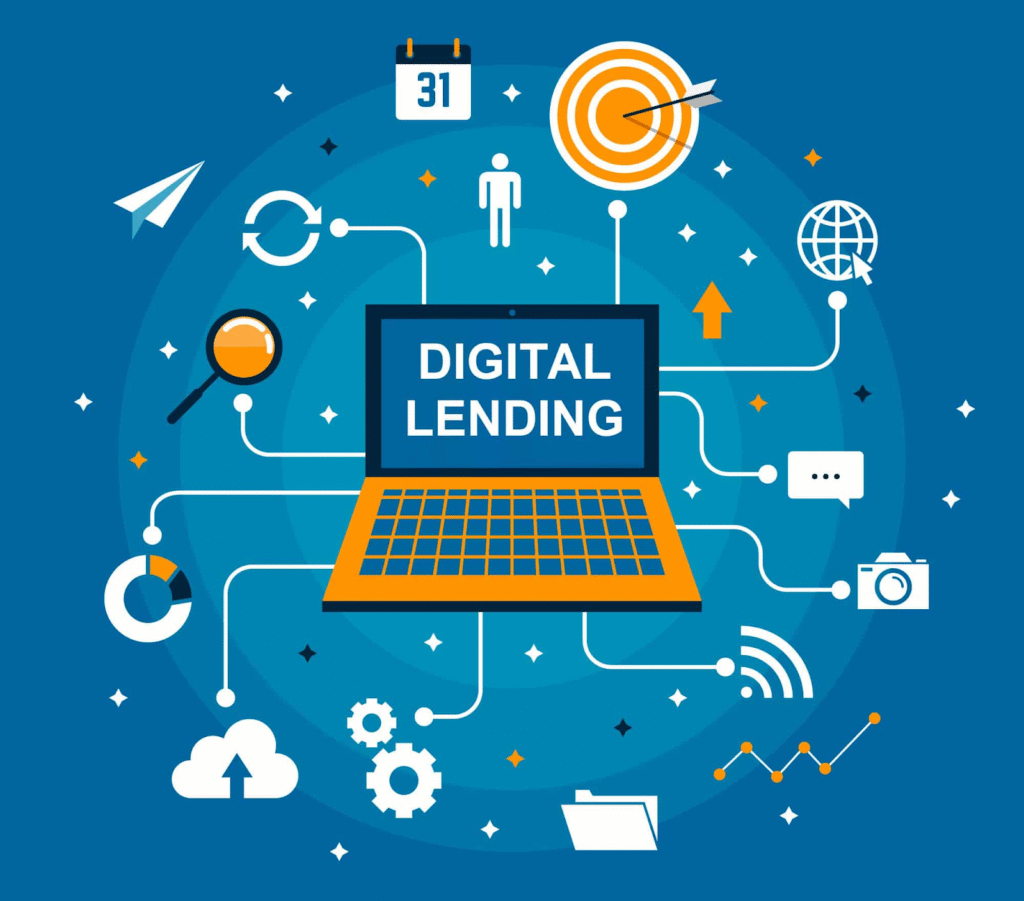
Digital lending has revolutionized the financial landscape by making loans easily accessible to individuals and businesses alike. Whether you need funds for a personal emergency, to expand your business, or to consolidate debt, digital lending simplifies the application and disbursement process, often completing the entire cycle in mere minutes. However, this convenience comes with its fair share of risks, including data breaches, privacy concerns, and fraudulent loan apps. So, the question arises: Is digital lending safe?
This article explores the various risks associated with digital lending, how to identify scams, and actionable steps to protect yourself, especially when dealing with loan apps without PAN card requirements.
Understanding Digital Lending
What Is Digital Lending?
Digital lending refers to the process of applying for and obtaining loans through online platforms and mobile apps rather than traditional banks or credit unions. These platforms utilize technology to automate underwriting, disbursing funds, and collecting repayments. The widespread adoption of smartphones and advancements in artificial intelligence have propelled the growth of online lending platforms, making access to credit quicker and easier than ever.
Why Is Digital Lending Popular?
1. Convenience: Borrowers can apply for loans anytime, from anywhere.
2. Speed: Many platforms approve loans in minutes or hours.
3. Minimal Documentation: Some platforms require only basic information, offering loans even to individuals who lack substantial credit history or documentation, such as a PAN card.
Risks Associated with Digital Lending
Though digital lending is convenient, it’s not entirely risk-free. Here are some common risks:
1. Cybersecurity Threats
Digital lending platforms often require users to share sensitive information like phone numbers, bank account details, or government-issued IDs. If these platforms are inadequately secured, they may be vulnerable to data breaches, exposing borrowers’ private information to malicious entities.
2. Privacy Concerns
Some loan apps collect excessive data about users, such as access to phone contacts, location, or browsing history. These practices often go beyond the scope of lending services, potentially leading to misuse or abuse of personal data.
3. Fraudulent Loan Apps
The surge in demand for digital loans has also given rise to fake loan apps and platforms that prey on unsuspecting borrowers. Some apps promise instant loans but charge exorbitant fees, excessively high-interest rates, or vanish after collecting sensitive data or upfront payments.
4. Lack of Regulatory Oversight
Not all digital lenders operate under strict financial regulatory guidelines. In cases where platforms aren’t properly monitored, they might offer loans with hidden fees, exploit borrowers, or fail to comply with consumer protection laws.
5. Predatory Lending Practices
Some loan apps may offer small loans without PAN card requirements, and while finding a loan app without pan card might seem convenient, these often impose exorbitant interest rates, short repayment terms, or additional fees—trapping borrowers in a cycle of debt.
Identifying Scams: Red Flags to Watch For
When using digital lending platforms, spotting potential scams could save you from financial ruin. Look for these red flags:
1. No Regulatory Certification
Legitimate loan apps are registered and licensed by financial regulators in your country. If the app lacks certification, avoid it.
2. Lack of Transparency
Beware of platforms that hide fees, interest rates, or repayment terms. Legitimate lenders provide clear disclosures upfront.
3. Requests for Upfront Payments
Any lender asking for upfront fees for application processing or disbursement is most likely fraudulent.
4. Excessive Permissions
Be cautious of apps that seek access to unnecessary personal data, such as your contacts, photos, or texts.
5. Unrealistic Loan Offers
If a loan app offers ridiculously low interest rates or claims to approve loans without minimal documentation requirements such as a PAN card or other valid ID, carefully evaluate their legitimacy before proceeding.
How to Safely Navigate Digital Lending
Safety should always be the priority when dealing with digital lenders. Follow these tips to protect yourself:
1. Use Trusted Platforms
Research and choose reputable digital lending platforms. Check reviews, ratings, and testimonials before using an app. Regulatory bodies often publish lists of licensed lenders, which can serve as a useful point of reference.
2. Understand Terms and Conditions
Read the fine print before accepting a loan. Pay special attention to interest rates, repayment schedules, late fees, and penalties to ensure no unpleasant surprises later.
3. Protect Your Data
When downloading a loan app, review its privacy policy and permissions it requests. Opt for apps that collect the bare minimum of data required for loan processing. Never share sensitive information, such as OTPs or passwords, with anyone.
4. Verify Regulatory Compliance
Ensure the platform complies with country-specific financial regulations and is registered with the appropriate authorities. Refusing to disclose regulatory credentials is a major red flag.
5. Beware of Fraudulent Loan Apps
Before downloading a loan app, verify its legitimacy. Avoid apps with poor reviews or those not listed on popular app stores such as Google Play or Apple’s App Store.
6. Use Loan Apps with Proper Documentation Requirements
While some platforms may offer loans without PAN card requirements, be cautious. Legitimate lenders require some form of documentation to assess your repayment capacity and avoid predatory lending issues.
7. Avoid Sharing Data Unnecessarily
Scammers often attempt to extract sensitive information by sending phishing SMS or emails. Never click on untrusted links or share personal information unless you’re dealing with an official, verified lender.
8. Recognize Warning Signs of Financial Abuse
If you feel trapped in debt due to high-interest rates, short repayment terms, or hidden charges imposed by a loan app, reach out to financial counselors or regulators for assistance.
Benefits of Staying Safe While Using Digital Lending Platforms
When used responsibly and securely, digital lending can offer a variety of benefits, including:
- Ease of access to funds: You can secure loans without visiting a physical bank branch.
- Speedy processing: From application to approval, everything happens quickly.
- Catering to underserved populations: Platforms that provide loans without PAN card requirements may address individuals with limited access to traditional banking systems.
By mitigating risks and avoiding scams, borrowers can fully leverage these benefits to meet their financial needs.
Conclusion
Digital lending is a boon for countless borrowers looking for quick and convenient access to credit. However, its numerous advantages come alongside certain risks, including cybersecurity threats, fraudulent platforms, and predatory lending practices. It’s imperative for borrowers to be cautious and discerning when choosing a digital lending platform or loan app, especially those promising loans with minimal documentation like no PAN card requirement.
To ensure safe borrowing, opt for trusted and regulated lenders, review terms and conditions thoroughly, and remain vigilant for signs of scams. While digital lending can be safe when approached responsibly, borrowers who neglect security or fall for fraudulent schemes risk financial harm. By staying informed and proactive, you can navigate the world of digital lending safely and confidently while reaping its benefits.
